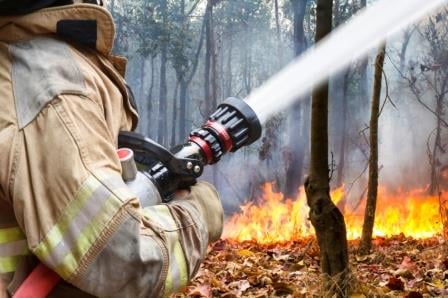

A year after wildfires ripped through Fort McMurray, wildfire season is here again. Many Canadians are at risk of being impacted and preventing the devastation that occurred in 2016 should be top of mind for those in areas susceptible to wildfires. Luckily, there are some simple precautions that can be taken to protect families, homes and businesses should the worst case scenario become a reality. Awareness is growing and on May 6th FireSmart Canada launches Wildfire Community Preparedness Day in an attempt to make communities across the country a safer place to live.
“In the event of a wildfire, the first thing someone should do is check the radio, TV, internet or their phone for any news, information or instructions that is being relayed by the authorities. If there is no information being communicated, call 911,” says Anthony Black, the National Catastrophe Manager at RSA Canada. “They should then enact the first step of a pre-arranged emergency plan, which constitutes assembling family and pets in a pre-agreed meeting place. Personal safety should always take precedence.”
If time permits, it is advised that people safeguard their home or business by closing all of the doors, windows and fireplace flues and turning off any gas, propane and air conditioning units, which could cause significant internal damages if left running. “If evacuating, everyone should ensure they communicate with family, friends and neighbours to let them know where they’re heading,” Black says. “If you’re trapped in a car, park your vehicle in an area that is as clear from vegetation as possible, call 911, lie on the floor and cover yourself with a blanket or jacket.”
“If you’re trapped in the home, call 911, assemble the family together and close all of the doors and windows, fill the sinks and tubs with water and stay away from outside walls and windows.”
Canadians in wildfire zones are also advised to create an emergency preparedness kit that is easily accessible and transportable in the event of an unexpected evacuation. The disaster safety kit should contain supplies to last the family for at least three to five days. When creating the preparedness kit, Black advises Canadians to consider the “Five Ps”:
People and pets: “Make sure you have important contact information, medical information and all members of the family have a copy of the emergency plan,” Black says.
Prescriptions: Be sure to include medical equipment, batteries, power cords, spectacles and any regularly taken medications.
Papers: “Prepare any important papers that you might need and have them electronically added to your phone or laptop as well as having a hard copy in your preparedness kit,” Black says. “These include insurance papers, government identification documents, financial information and online passwords”
Priceless: “Don’t forget to pack any special mementos or irreplaceable valuables,” Black says.
Personal needs: Includes clothing, water, non-perishable food, a can opener, infant formula, diapers, pet food, a first aid kit, cash, radio, flashlights, sleeping bags, blankets, chlorine bleach or water purifying tablets, fire extinguishers, a lighter or water proof matches, plates, cups, cutlery, paper, pen and pencil, books and games, a whistle, dust masks, garbage bags, maps, a basic tool kit, some rope, antifreeze and windshield wiper fluid.
Preparedness is the key ingredient to ensuring your clients safety. RSA’s Climate Smart hub includes helpful tips that you can share with your clients to help them prepare for a wildfire.
